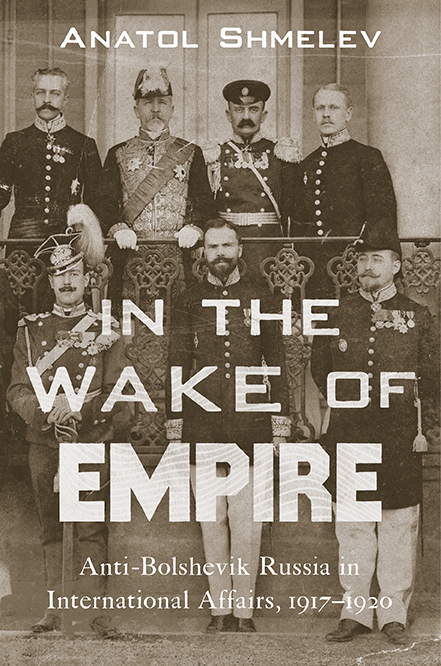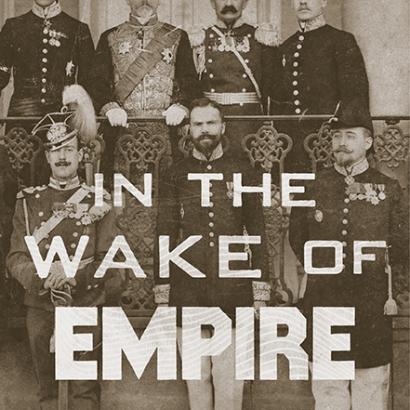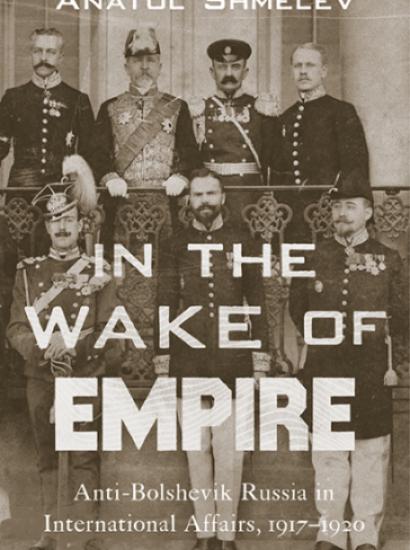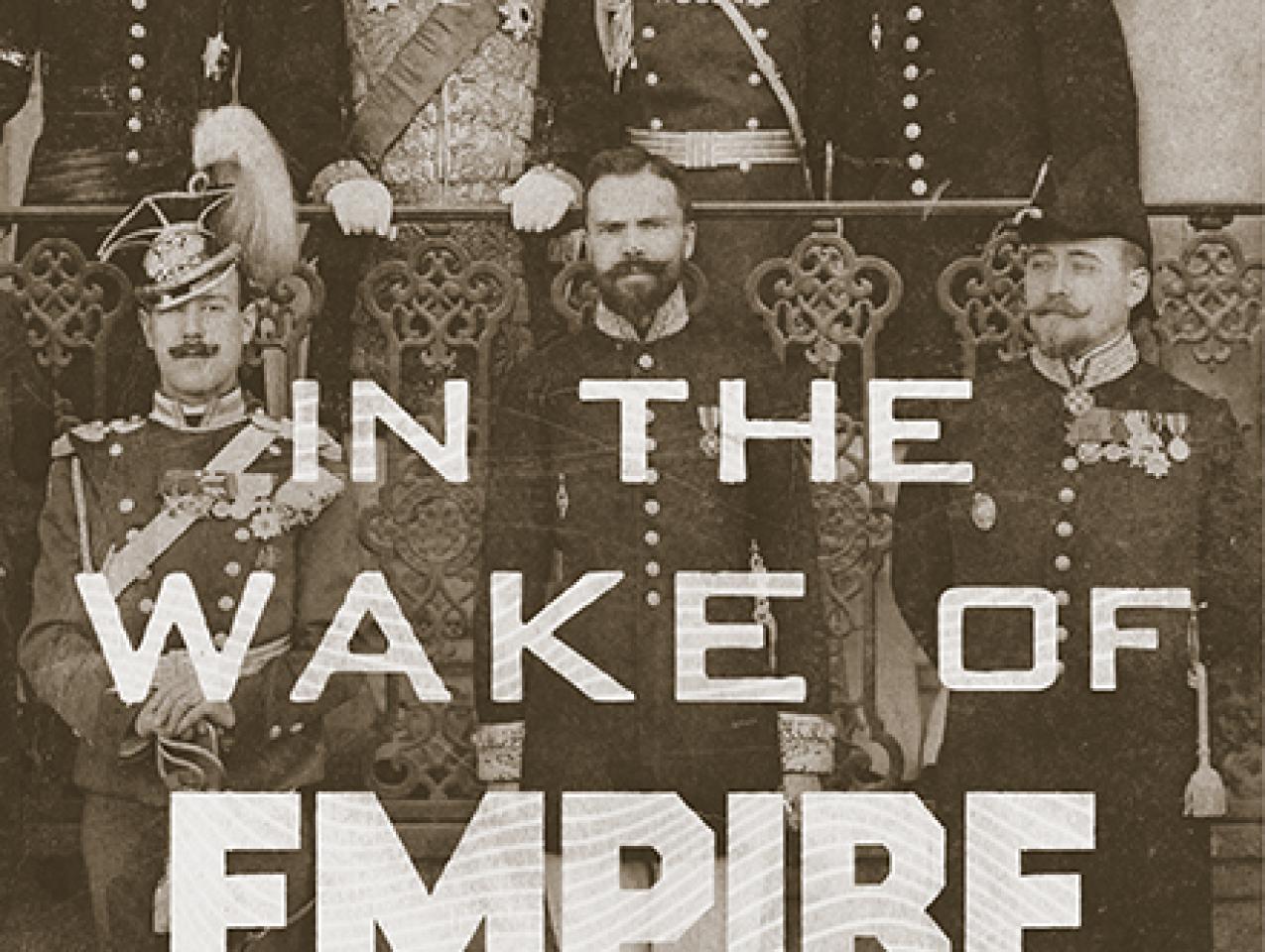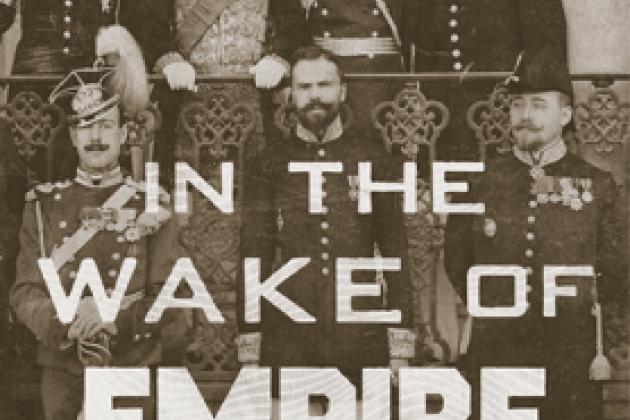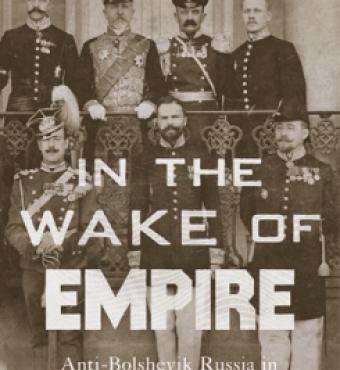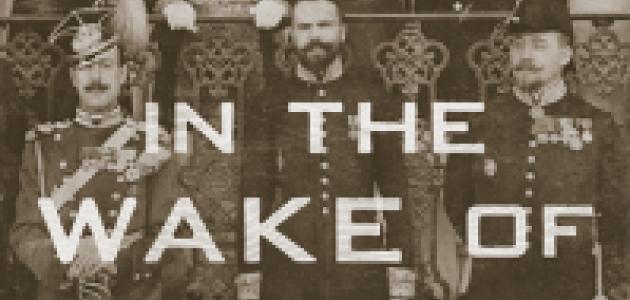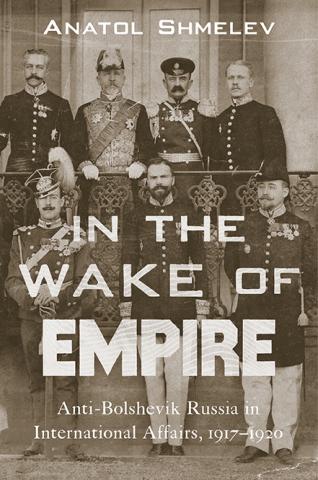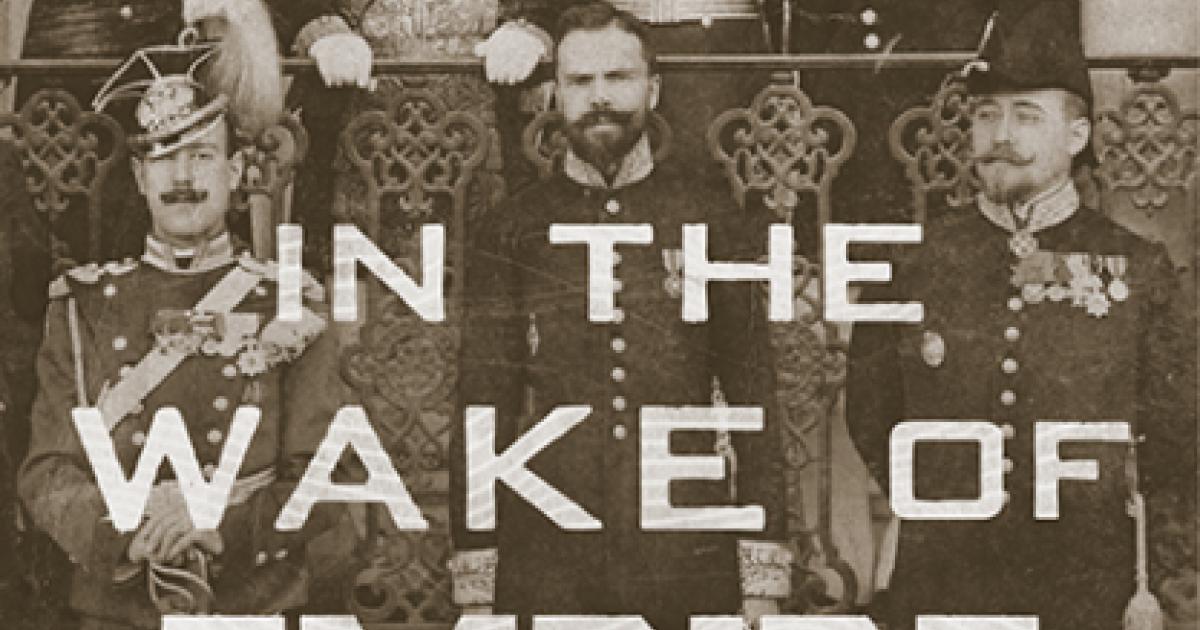- History
- World
Editor’s note: This is an introduction to In the Wake of Empire: Anti-Bolshevik Russia in International Affairs, 1917–1920, by Anatol Shmelev, Hoover research fellow and Robert Conquest Curator for Russia and Eurasia. The book is newly published by the Hoover Institution Press. Click here to buy a copy.
The twentieth century saw the demise of a number of empires, but none was so complete, decisive, and laden with consequences as the fall of the Russian empire in 1917 or of the Soviet Union in 1991. Events of this nature present the core nation of the collapsing empire and all the new states that spring from it with the problem of defining their relations with formerly integral regions, as well as the wider world, in a post-imperial context.
Yet drastic changes in a situation rarely produce equally drastic changes in people’s perception of that reality. Previous ways of thinking and forms of discourse often still function in traditional modes, even though the set of problems they deal with has become radically different. Thus, even as a country ceases to be a great power, the concept of it as a great power can continue to influence decisions and policy making.
In the Wake of Empire: Anti-Bolshevik Russia in International Affairs, 1917–1920 is a study of how such a process took place in Russia from 1917 through 1920. The Bolshevik coup of November 1917 led to the creation of, roughly speaking, two regimes in Russia: the Bolshevik “Reds” and the anti-Bolshevik “Whites.” Each pursued a policy toward the outside world based on an entirely different set of principles, with only the Whites wishing to be seen as continuing previous policies and practices. The primary purpose of this new book is to examine the personalities, institutions, political culture, and geostrategic concerns that shaped the foreign policy of the anti-Bolshevik governments and to attempt to define the White movement through them.
Past as Prologue
The question of continuity of imperial Russian and Soviet foreign policies has been contentious for historians for many decades. The emergence of a post-Soviet foreign policy has added fuel to the debate. Of course, there were both continuities and changes in foreign policy from pre-revolutionary Russia to the USSR. A synthetic approach sees continuities in, for example, unchanged principles of international law and diplomatic practice to which the Soviet regime was ultimately forced to adjust. Yet there was another element to continuity, and that was the fact that the Bolsheviks, whatever their desires for political change, could not change geography: the Soviet Union inhabited roughly the same spot on the globe as Russia had before 1917, and all diplomacy and strategy, regardless of political ideology, had to be based on this simple fact.
Much has been written on the origins of Soviet foreign policy and Soviet-Western relations in which the Whites have been assigned a role of at best episodic character, as objects, rather than subjects, of foreign affairs. In the Wake of Empire aims intentionally to place the emphasis on the enemies of the Bolsheviks—not because the Bolsheviks are unimportant, but because Bolshevik policies and the policies of foreign governments toward them have already been examined in great detail.
The reasoning behind historians’ lack of interest in the Whites is based on the questionable nature of their influence and legacy. After the last White troops evacuated Vladivostok in October 1922, Bolshevism triumphant eclipsed all other factors and alternatives, both within the Union of Soviet Socialist Republics and abroad. Although this left room for debate as to the nature of continuity between the prerevolutionary Russian and Soviet systems, the Whites—the “final dream of the old world,” in Russian poet Marina Tsvetaeva’s poignant description—never formed a part of this debate.
And yet there is serious reason to see in the foreign policy of the White governments a link in the chain of continuity of Russian foreign affairs and, indeed, of general international affairs. It is no accident that the concept of a great and united Russia, at the root of White ideology in 1917−22, was resurrected and supported by highly divergent post-Soviet groups, from nationalists to communists. In fact, the concept had never died, and in one form or another has existed at least as long as the nationalism of which it was born. All that has changed are the conditions under which it is promulgated, and the question of whether it is a primary or secondary factor in policy formulation at any given time.
Continuity—but of What?
It has often been said—and the Whites themselves contributed to this view—that the White armies were “outside politics,” interested only in defeating Bolshevism by military means, and that therefore they developed no comprehensive political program. Yet inasmuch as there was a positive program, it was embodied in the slogan “Russia—Great, United, and Indivisible.” This meant, in effect, the restoration of the Russian state within the borders of 1914 (with the exception of Poland) with local autonomy for the national minorities. This was more than the main goal of the movement. It was also a means of self-identification for the Whites: the slogan defined their movement and therefore could not be compromised. General Anton Denikin said as much in his five-volume memoir-cum-study of the Russian Revolution and Civil War, Ocherki russkoi smuty:
The unity of Russia . . . only that unity—wavering, debatable, perhaps even illusory—allowed me to impress upon others respect for the Russian name, to receive enormous assistance and to guard against external encroachments; to shield against the fate that awaits all small, unfriendly, bickering borderlands, ultimately swallowed up by foreigners.
This policy is described as intolerance. But can our great country survive without the Baltic and Black Seas? Can it allow its borderlands to become part of an enemy camp, though so much Russian, and especially Cossack, blood has been shed and so much Russian labor and property has been invested? . . .
This is not intolerance, but rather the observance of the higher interests of the Russian state.
Of course, the concept of “Russia—Great, United, and Indivisible” was and is primarily associated with foreign, rather than domestic, policy. In this respect, the White movement represents a story of Primat der Aussenpolitik (the primacy of foreign affairs) taken to its extreme: an attempt to pursue a foreign policy largely formulated under prerevolutionary conditions in an entirely different environment. The international pretensions that followed from such a program severely complicated relations not only with the newly established border states of the old empire but with all Russia’s neighbors, allies, and enemies, whose help and cooperation—or at least benevolent neutrality—were necessary to prosecute the struggle against Bolshevism.
This is particularly apparent in the Whites’ view of the German threat on their western frontier and in the way this view influenced their relations with the border states and the other European powers. Other problems—such as the question of concessions, treaty rights, and the maintenance of territorial integrity and spheres of influence in the Balkans and across the length of the southern border—also put the Whites into conflict with the demands and hopes of Russia’s neighbors near and far.
Nationalism was a key theme of the White movement: the fact that the Whites often called their cause the “National Movement” indicates the emphasis they placed on it. But nationalism was not the only determinant of White foreign policy. Besides this ideological factor, there were geopolitical, strategic, and economic considerations. There were also what might be called psychological factors: an irrational and ill-placed faith in the desire of the Allies to help them, and wishful thinking with regard to their own prospects that obscured the reality around them.
All these factors worked, in unison or separately, to give White foreign policy an unbending rigor in questions where a pragmatic flexibility might have achieved better results. The possibility of pursuing a different course has, however, been vastly overrated by historians and contemporaries alike. The course that was in fact taken was shaped by extreme pressures, both internal and external. Domestic political considerations, information received as to the aims and actions of foreign governments, and theoretical views as to the nature of the Russian geostrategic situation were all formative elements in determining the course of White foreign policy.
People and institutions also played a role. The choices of various, almost random, figures to head the central apparatus of the Foreign Ministry at Omsk, deep in Siberia, or of former imperial foreign minister Sergei Sazonov, ambassador to France Vasilii Maklakov, ambassador to the United States Boris Bakhmeteff, and others to represent the Whites abroad had an important influence on the shape this policy was to take. Institutional rivalry—mainly among the army, navy, finance, and diplomatic departments—also affected the decision making process and made unity of action difficult, if not impossible.
Nor was there machinery in place to properly formulate and implement a policy. Communications—the gathering and dissemination of information—were always a problem. The importance of communications should not be understated. A telegram from General Nikolai Iudenich in Northwestern Russia could take two weeks to reach Admiral Aleksandr Kolchak at Omsk, and the answer could take another two weeks to return. In the course of a month, the situation would change enough to negate both the original request and the answer. In part, this was an issue of funding, but it underlines how the organization as a whole was inadequate to deal with the questions the Whites faced.
The lack of an efficient governmental machine, the appearance and retention of inexperienced and even chance figures in key positions, and the inability to respond quickly to a fluid situation made the conduct of foreign policy in a traditional mode all but impossible.
Archives Tell the Tale
Much of this story can be told thanks to the rich archival holdings of the Hoover Institution, which include both personal papers of White military leaders, such as General Iudenich, and diplomats, such as Sazonov and Maklakov, as well as the records of the Russian embassies and legations in France, the United States, and other countries. Letters, reports, and most of all, thousands of telegrams tell the story of information gathering, decision making, negotiations, analysis and other aspects of the policy making and implementation process.
These collections were acquired by the Hoover War Library (as it was then called) primarily in the 1920s and 1930s, mainly through the efforts of the curator General Nikolai Golovin, a Russian émigré who had himself played a role in negotiating greater military aid for the Whites from the Allies, and who settled in France after the civil war and became a leading acquisitions agent for the Hoover War Library almost until his death in Paris in 1944.
Hoover’s rich collections on the White movement are almost unparalleled, with the other leading institutions being the Bakhmeteff Archive at Columbia University, established by Boris Bakhmeteff, former Russian ambassador to the United States, and the State Archives of the Russian Federation, which house the central archive of the foreign ministry of Admiral Aleksandr Kolchak’s Anti-Bolshevik government at Omsk, as well as rich holdings from the former Russian Historical Archive at Prague, established by émigrés who had escaped the Bolsheviks. This archive was “gifted” by the Czechoslovak government to the USSR after the end of the Second World War, its contents restricted until the collapse of communism in the early 1990s.
In the Wake of Empire drew on all these archives, but the resources offered by the Hoover Institution offered the greatest opportunity for study and analysis because of their variety and the excellent organizational and descriptive work performed by the archival processors. The clarity and logical construction of the finding aids made it possible to easily identify and consult necessary parts of the collections. This ease of research in turn made it possible to focus on the story told by the documents, rather than on the tedious process of searching for particular elements to tell that story. Though most of the collections used by the author had been held by the Hoover Library & Archives for decades, some materials were only recently acquired.
These rich diplomatic collections, despite their depth and breadth, had received scant attention from researchers—for the reasons described above—until recently, as scholars from the Russian Federation began to visit, access the papers and records, and, in many cases, publish the contents whole. In the early 2000s, the Hoover Institution, largely thanks to the efforts of then-heads of the Library & Archives Elena Danielson and Charles Palm, supported a number of documentary publications in Russian, including the extraordinary correspondence of Vasilii Maklakov and Boris Bakhmeteff, who also happened to be brilliantly educated men of deep reflection. Their correspondence shows not only how they viewed the development of the Russian Revolution and the victory of Bolshevism, but also the web of international politics and foreign affairs that enmeshed them so intricately at that time and into the early 1950s, as they continued to struggle to make sense of the USSR, its policies, and its place in the world order.
Desires Unfulfilled
In speaking of the effect of nationalism on the development of Russian imperialism, historian Dietrich Geyer posited three “traditional desires with the capacity to make Russian hearts beat faster: the sight of the Patriarchal cross on St. Sophia [in Constantinople]; the destruction of the German Drang nach Osten [expansionism toward the east]; and the vision of Russia’s Slavic brothers grouped around her in wide-eyed admiration.” Despite the inability to see these desires through to fruition and the more pressing immediacies of the struggle against the Bolsheviks, the Whites in their foreign policy were motivated to a striking extent by these same objectives.
Considering themselves protectors of the interests of the Russian state, the Whites were faced with the fact that the state as such did not exist. Thus their weak domestic and international position forced them to solve two ancillary problems before dealing with the central problem of foreign policy. These ancillary problems were international recognition and foreign aid in the struggle against Bolshevism.
In some respects, this was no different from the position of the other countries involved in the postwar settlement—all had to bring their appetites in line with what other powers were inclined to grant them. But Russia was in a state of chaos and civil war, with competing governments proposing radically different programs. The result was that its voice remained largely unheard, leaving its interests to be interpreted and defined by other members of the international community.
It is of course easy to criticize the Whites in retrospect for a refusal to adapt, but that is to ignore the enormous pressures that kept certain possibilities, such as the recognition of the border states, from being realized. Problems of national security and geopolitical considerations (as the Whites understood them) ultimately outweighed the exigencies of the struggle against the Bolsheviks. Indeed, In the Wake of Empire aims to argue that the fight for a “Russia—Great, United, and Indivisible” not only eclipsed the fight against Bolshevism but made the latter struggle untenable.







